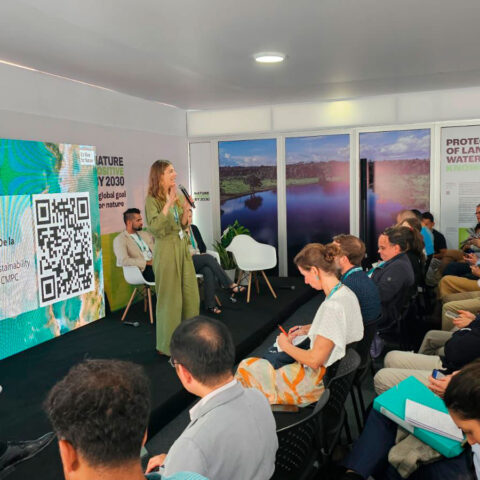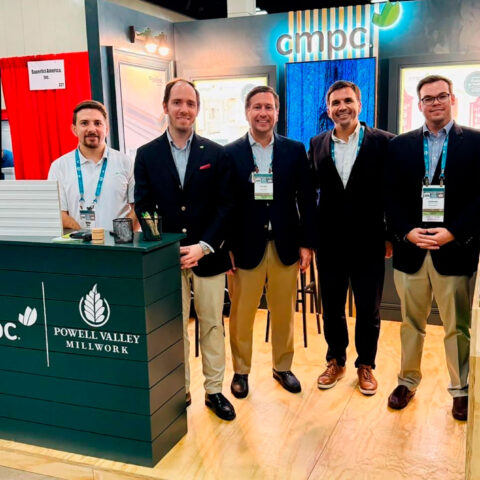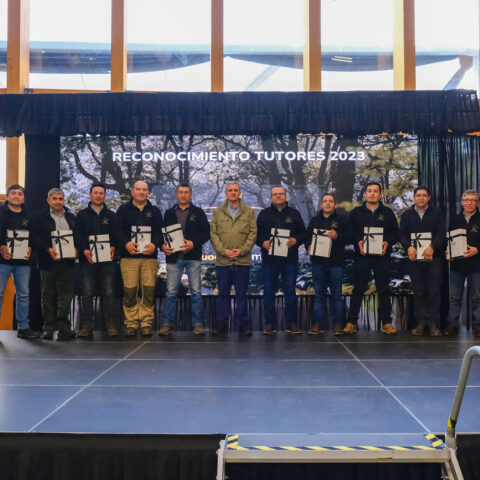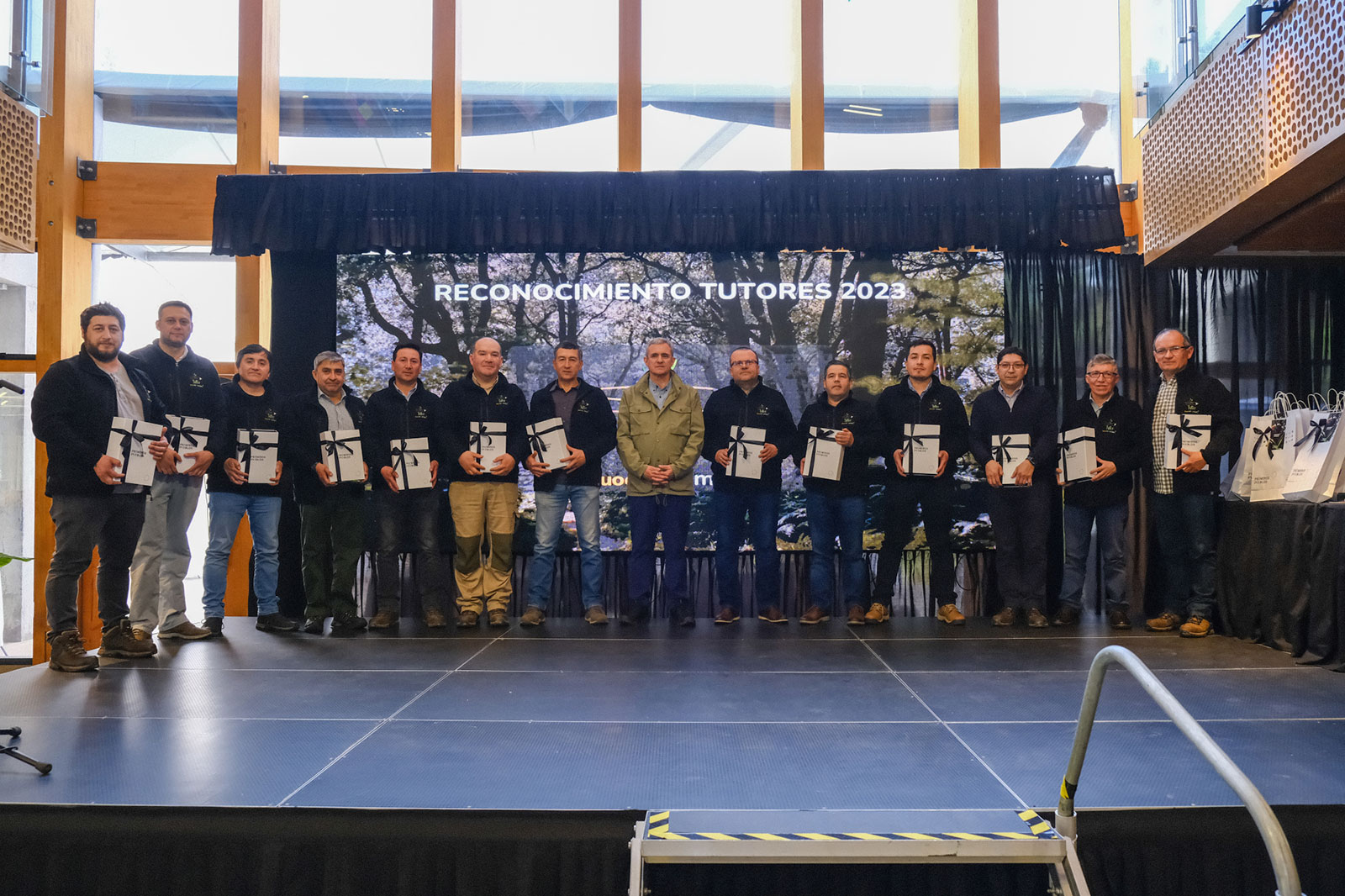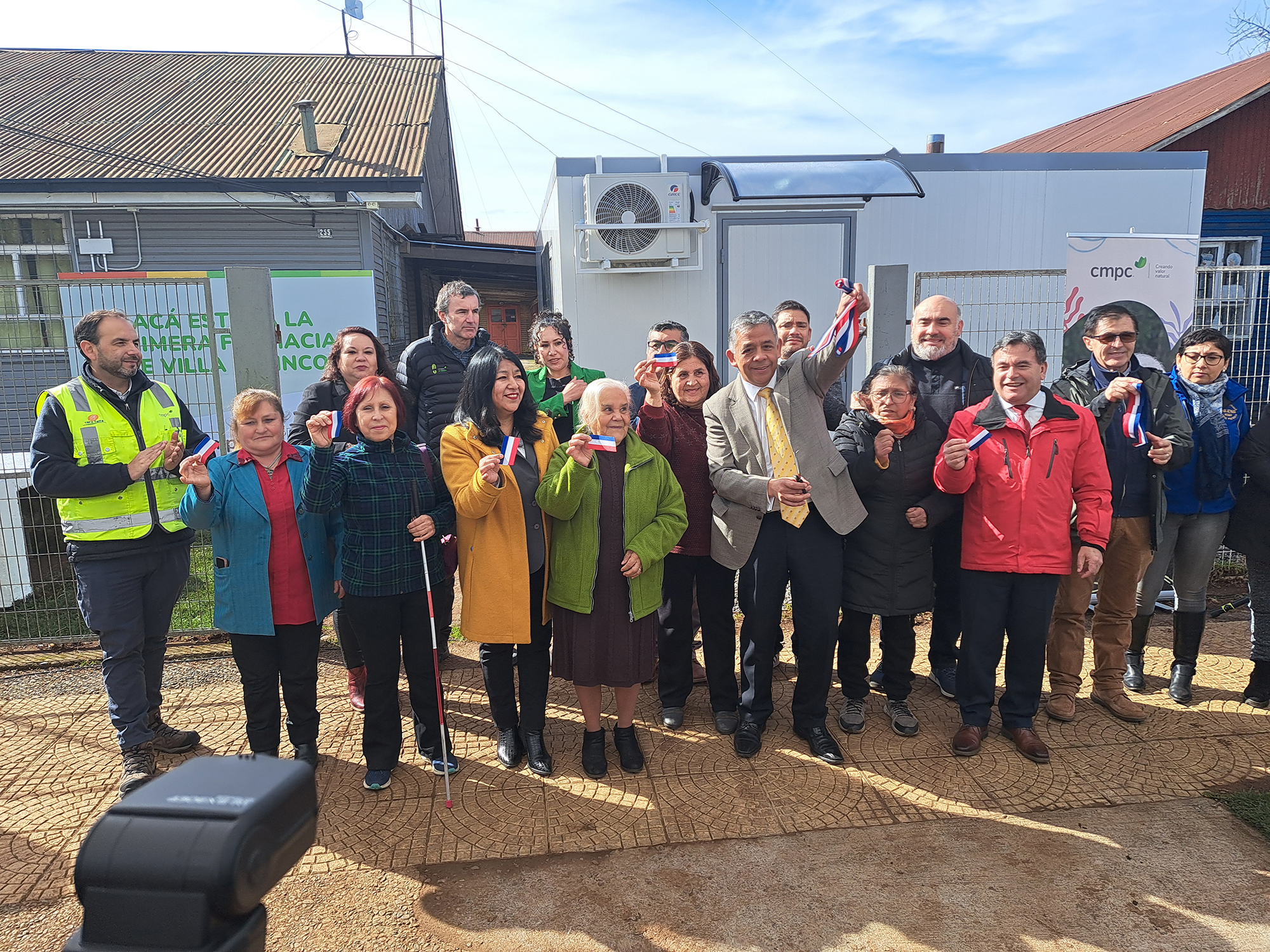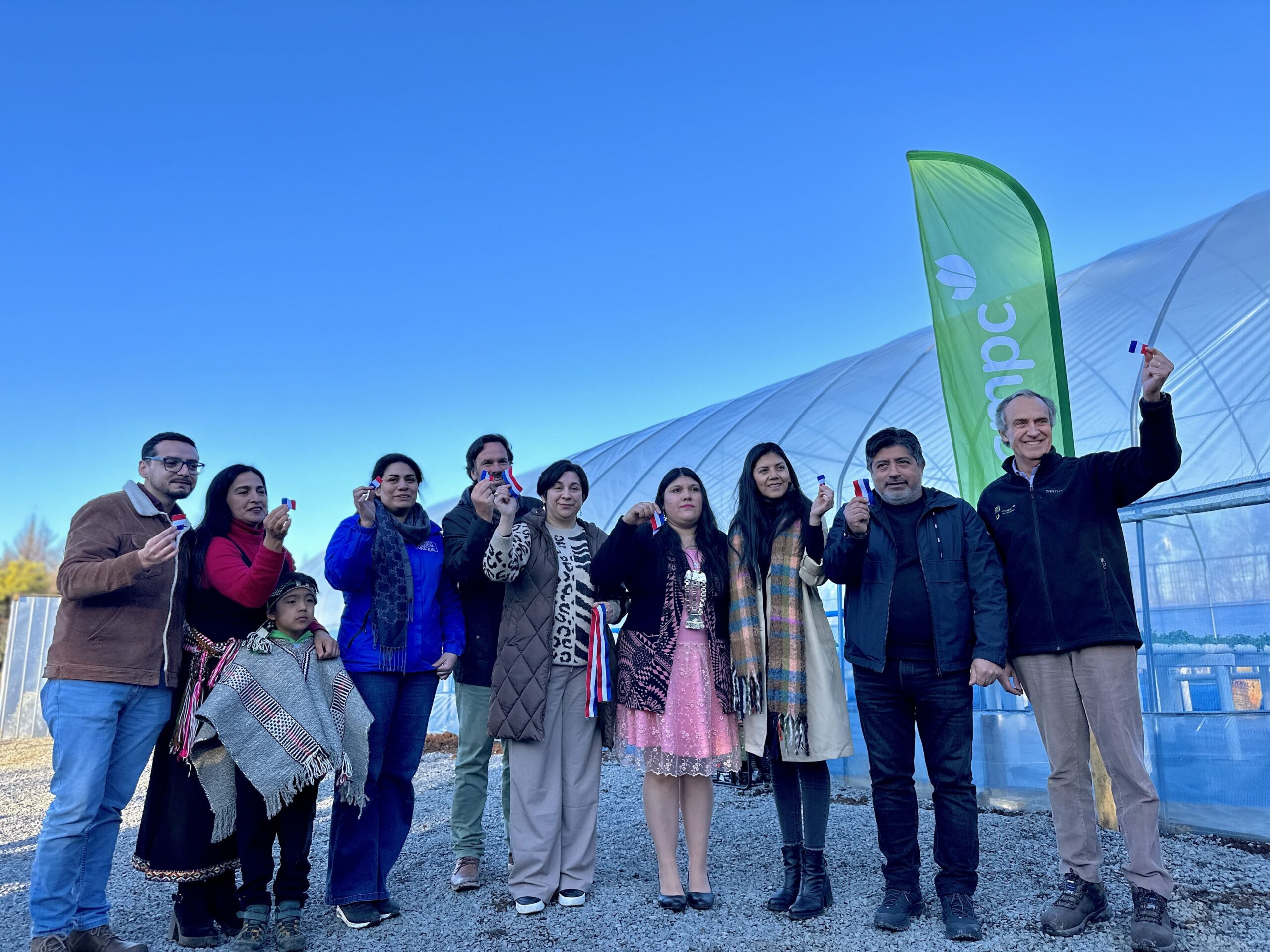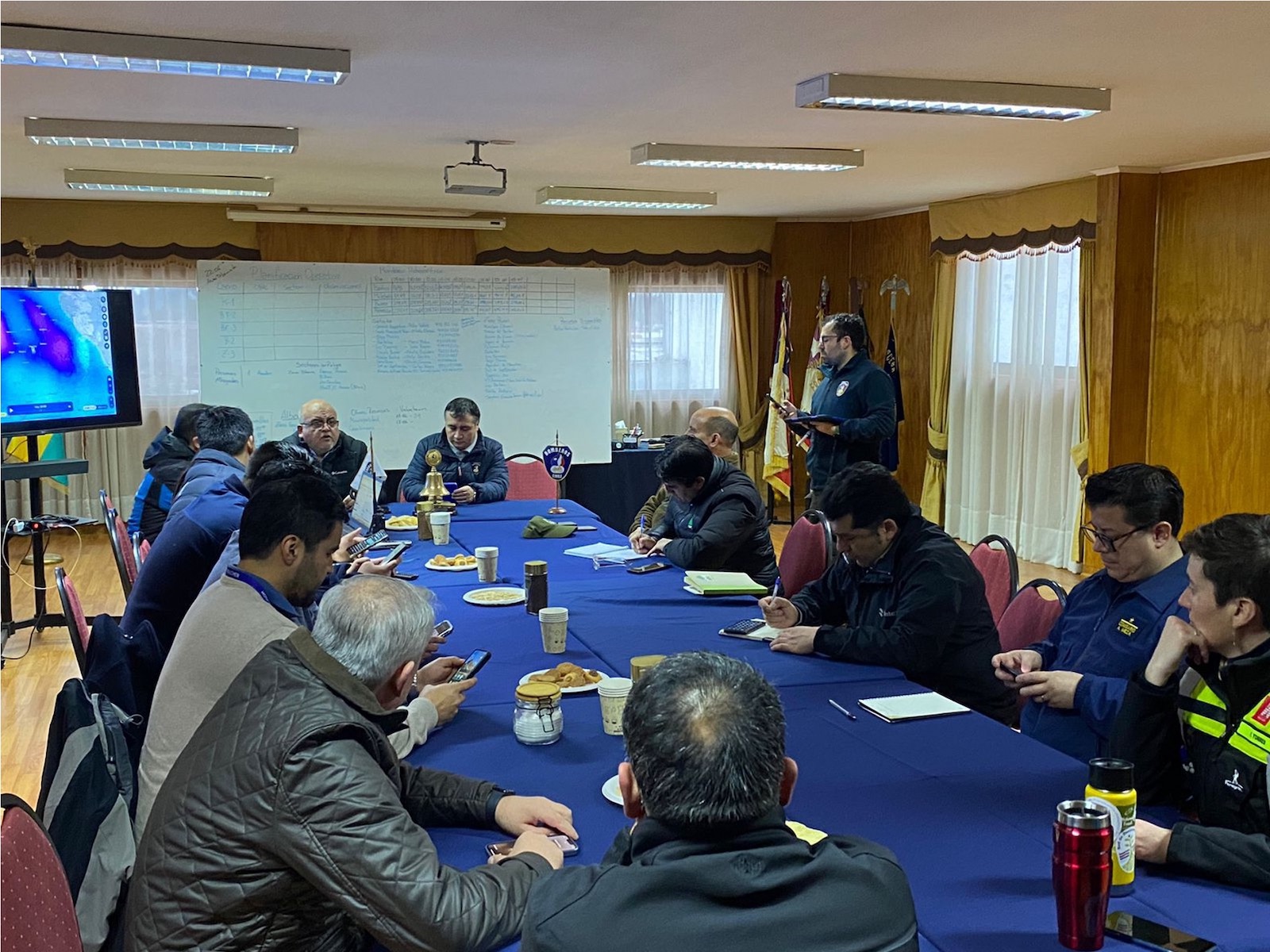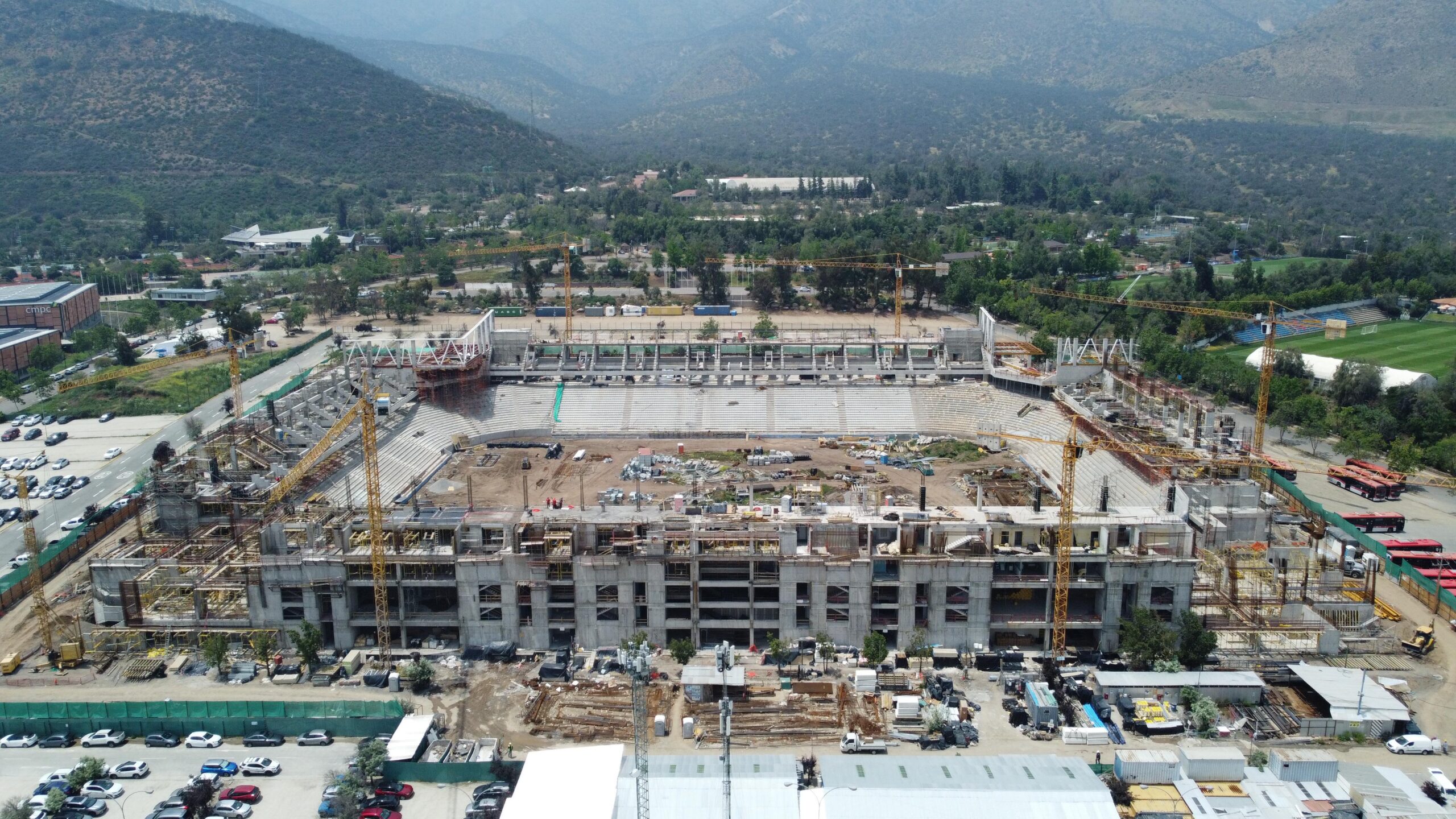
Universidad Católica’s new stadium receives first wooden beams, progressing along its transformation toward becoming the first sustainable stadium in Chile
23 de November, 2023
With roughly one third of the work already done, this modern, multipurpose and sustainable venue should start operating in the second half of 2024, with an increased capacity to host 20 thousand people in its stands.
The last few days have seen key milestones in the stadium’s progress at the Universidad Católica in the Las Condes neighborhood of the Metropolitan Region. A long-awaited benchmark was reached in the construction of the new UC stadium over the past month. Wood is one of the predominant elements in the design, and it began arriving at the venue in order to start making the beams that will form the roof and exterior of its new grandstands.
These first beams and those set to arrive at the end of November are part of the 1,600 m3 of laminated wood that CMPC committed to the design and infrastructure of the stadium. These beams will support the roof of the Lepe Gallery and the Prieto Gallery, while wooden structural beams will hold up the stadium’s roof. The façade of the sports complex will be built with 30% wood.
To this end, Niuform, a CMPC company and specialist in wood construction, played a crucial role in the design and construction of the new bastion of sports, the first sustainable one in Chile. Glued Laminated Timber or “Glulam” will be used, a CMPC material made with layers of dimensioned wood bonded together that has revolutionized the world of construction by emitting just one third of the CO2 than does its counterpart of reinforced concrete and by being carbon negative, i.e., it eliminates more CO2 than it emits. It’s estimated that due to its use in the project, once the work is done, the sports venue will have captured 1,500 tons of CO2 – equivalent to 4,100 barrels of oil – transforming the Casa Cruzada into a first-class sustainable stadium.
“When we signed the agreement with CMPC, work had just begun on our new stadium. Months have passed, and we’re now seeing how that partnership has been made tangible with the arrival of the first beams from Niuform. With the steps being taken, we’re happy to see our desire to have a new stadium for Universidad Católica by the latter half of 2024 progressing quite nicely. CMPC is one of the foundational pillars for this project’s development. We’re also very grateful for the commitment they’ve made to the new Universidad Católica stadium. They are confident that it will serve as a genuine contribution to sports in Chile,” explained Cruzados President Juan Tagle.
For CMPC CEO Francisco Ruiz-Tagle, the company’s contribution has a special value because “Wood is a natural, renewable and fundamental raw material, ideal for use in the decarbonization process. Compared to other materials, the wood construction process consumes much less energy. In addition, wooden buildings capture CO2 for most of their useful lives. We have no doubt that the new Universidad Católica stadium will have its own special hallmark and stand as a leader on the continent thanks to the many sustainable innovations provided by wooden construction.”
The company will also participate in the landscaping surrounding the stadium, specifically in the parking lots. To this end, CMPC will donate 3,200 native trees including Quillay, Maitenes and Peumos. One thousand of them have already been sent directly from the Carlos Douglas nursery, located in the Biobío Region and are on the UC campus waiting to be planted in May.
According to Francisco Rodríguez, CMPC’s Sustainable Fiber and Conservation Manager, “These species come from the Chilean sclerophyllous forest and are much more acclimatized to conditions of greater drought conditions, so they need less water. The idea behind the donation of these specimens is for the greenery surrounding the stadium to be a much more sustainable green, in line with the purpose of the remodeling being carried out at the Universidad Católica stadium.”
For example, Quillay trees capture 14 tons of CO2 per year during the first 20 years of life. They attract bees, encourage pollination, and mitigate the effects of drought by being low water consumers.


